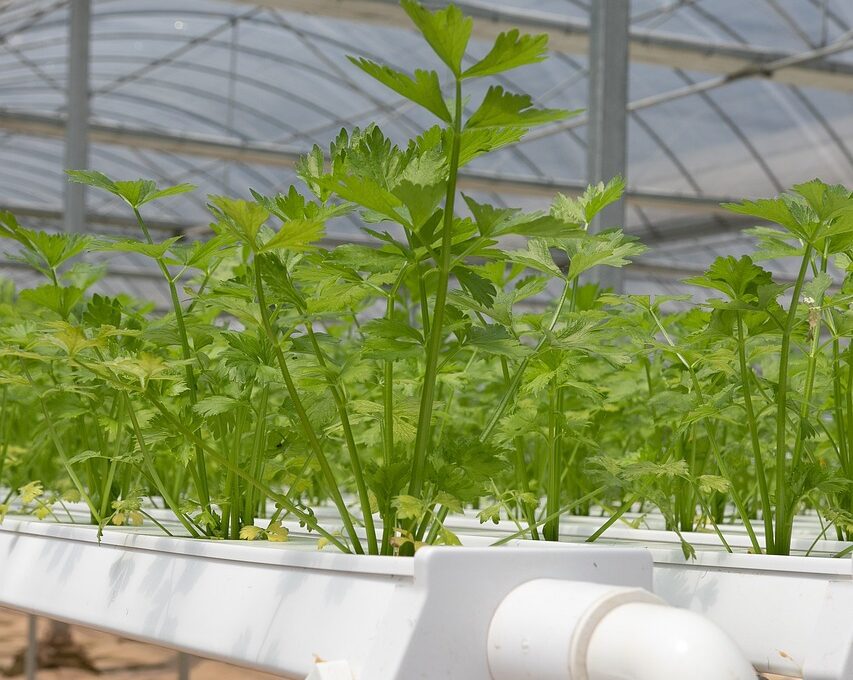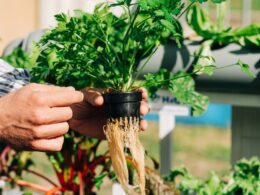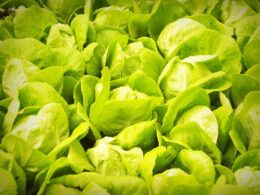Are you struggling with root rot in your hydroponic system? Root rot can be a frustrating and potentially damaging problem for hydroponic growers. It’s caused by a combination of factors, including poor water quality, overwatering, and lack of oxygen.
But don’t worry, there are steps you can take to prevent and treat root rot in your hydroponic garden. In this article, we’ll explore the causes of root rot in hydroponics and provide you with prevention techniques to keep it from happening in the first place. We’ll also discuss early detection methods and treatment options to help you save your plants if root rot does occur.
By the end of this article, you’ll have the knowledge and tools you need to stop root rot in hydro and keep your plants healthy and thriving.
Understand the Causes of Root Rot in Hydroponics
To prevent your hydroponic plants from suffering from rotting roots, it’s crucial to understand what causes this issue in the first place.
One of the most common symptoms of root rot is wilting or drooping leaves. This is because the roots are unable to absorb nutrients and water, causing the plant to wither. Other signs include a foul odor, slimy roots, and a brown or black discoloration of the roots.
Prevention strategies are key to stopping root rot before it starts. One of the most important things to do is to monitor the pH levels of your hydroponic system. When the pH levels are too high or too low, it can cause stress to the plant and make it more susceptible to root rot.
Additionally, make sure to use a high-quality nutrient solution that is free from harmful bacteria. Regularly cleaning your hydroponic system and removing any dead plant matter can also help prevent the spread of root rot.
In conclusion, understanding the causes of root rot in hydroponics is crucial to preventing this issue from affecting your plants. By recognizing the common symptoms and implementing prevention strategies such as monitoring pH levels, using a high-quality nutrient solution, and regularly cleaning your system, you can ensure that your plants stay healthy and thrive in their hydroponic environment.
Prevention Techniques
By taking proactive measures, hydroponic growers can safeguard their plants against devastating root damage. One of the primary prevention techniques is maintaining a proper nutrient balance. Overfeeding plants can cause an excess of nutrients to accumulate in the water, creating a breeding ground for harmful bacteria and fungi.
Regularly testing the nutrient levels and adjusting them accordingly can prevent nutrient imbalances and the resulting root rot. Another effective prevention technique is sterilization. Hydroponic systems are susceptible to pathogens that can infect the roots and cause rot.
Sterilizing equipment, such as pumps, hoses, and reservoirs, can eliminate these harmful organisms before they have a chance to take hold. Additionally, using sterile growth media, such as rockwool or coco coir, can prevent the introduction of harmful pathogens into the system. Incorporating preventative measures, such as maintaining nutrient balance and sterilizing equipment, can go a long way in protecting hydroponic plants from root rot.
By staying vigilant and taking these precautions, hydroponic growers can ensure their plants stay healthy and productive. Remember, prevention is the key to avoiding root rot, so take the necessary steps to keep your plants safe.
Early Detection of Root Rot
Now we’re going to talk about spotting root rot early on in the growth process. It’s important to catch it early so you can take immediate action and save your plants.
Here are some monitoring techniques you should use to detect root rot:
-
Check the color of the roots. Healthy roots should be white or light brown in color. If they’re turning dark brown or black, this is a sign of root rot.
-
Look for wilting or yellowing leaves. If the leaves on your plants are starting to wilt or turn yellow, this could be a sign of nutrient imbalances caused by root rot.
-
Smell the roots. Healthy roots should have a neutral smell. If you detect a foul odor, this could be a sign of root rot.
-
Check the water levels. If you notice the water levels in your hydroponic system are fluctuating or the water is becoming murky or slimy, this could be a sign of root rot.
By monitoring your plants regularly, you’ll be able to catch root rot early and take action to prevent it from spreading.
If you do detect root rot, it’s important to act quickly to save your plants. First, remove any infected plants or roots from your hydroponic system. Then, flush out the system with fresh water and add a hydrogen peroxide solution to kill off any remaining bacteria. Finally, adjust your nutrient levels to prevent nutrient imbalances that can lead to root rot.
Remember, prevention is always better than cure. So make sure you’re using proper sanitation techniques, maintaining proper pH levels, and monitoring your plants regularly to prevent root rot from occurring in the first place. By taking these steps, you’ll ensure the health and longevity of your hydroponic garden.
Does the Presence of White Stuff on My Hydroponic Plant Indicate Root Rot?
The presence of white residue on hydroponic plants can indeed indicate root rot. It is important to closely monitor the health of your plants, as root rot can quickly spread and damage the entire system. Prompt action, such as removing and treating affected plants, is crucial to maintain a thriving hydroponic garden.
Treatment Options
Let’s dive into how to treat root rot and save your precious plants! When it comes to treating root rot in a hydroponic system, prevention strategies are key. By regularly maintaining your hydroponic system and monitoring the health of your plants, you can catch root rot early on and prevent it from spreading.
One effective treatment option for root rot in hydroponics is to use beneficial bacteria. These bacteria can help to break down the dead and decaying matter in your system, which is often the cause of root rot. You can add these bacteria to your hydroponic system by using a commercial product or by making your own compost tea.
Another treatment option is to use a hydrogen peroxide solution. This can help to kill off the harmful bacteria and fungi that cause root rot. To use hydrogen peroxide, simply mix it with water and add it to your hydroponic system. Be sure to follow the instructions carefully and avoid using too much, as this can harm your plants.
By implementing these treatment options and practicing regular hydroponic system maintenance, you can effectively treat root rot and keep your plants healthy. Remember to monitor the health of your plants closely and take action at the first sign of root rot. With a little effort and attention, you can enjoy a thriving hydroponic garden for years to come.
Long-Term Solutions
If you want to ensure the long-term health of your hydroponic plants, it’s important to implement preventative measures and establish a regular maintenance routine. Hydroponic system maintenance is critical to preventing root rot.
Regularly inspect your hydroponic system to identify any potential issues, such as clogged or malfunctioning equipment, and fix them promptly. Ensure that your hydroponic system has proper drainage, and avoid overwatering your plants.
Nutrient management is also essential to prevent root rot. Ensure that your plants are receiving the appropriate nutrients for their growth stage, and avoid over-fertilizing. Over-fertilizing can cause nutrient buildup in the growing medium, leading to an overgrowth of harmful microorganisms that can cause root rot.
Use high-quality nutrients and monitor pH levels regularly to maintain a healthy growing environment for your plants. Establishing a regular maintenance routine for your hydroponic system will help prevent root rot and other issues.
This routine should include regular inspections, cleaning, and maintenance of equipment, as well as monitoring pH and nutrient levels. By being proactive and taking care of your hydroponic system, you can ensure the long-term health and success of your plants.
Frequently Asked Questions
Can root rot spread to other plants in the hydroponic system?
To prevent root rot from spreading to other plants in your hydroponic system, there are several prevention techniques you can implement. First, identify early signs of root rot, such as wilting or yellowing leaves and a foul odor from the water or plants. Once identified, take steps to address the issue by reducing water, increasing oxygenation, and adjusting the pH level. Regularly clean and sanitize your hydroponic system to prevent the spread of root rot.
By taking these preventative measures, you can ensure the health and safety of your hydroponic garden.
How long does it take for root rot to develop?
To prevent root rot in hydroponics, it’s important to take some prevention methods. Firstly, maintain proper pH levels and provide adequate oxygenation to the roots to help prevent the growth of harmful bacteria.
Secondly, regularly inspect the roots for any signs of discoloration or mushiness to aid in early detection of root rot. It’s important to act quickly and remove any affected plants to prevent the spread of the disease.
Typically, it takes around a week or two for root rot to develop, but it can vary depending on factors such as temperature and humidity. By implementing prevention methods and staying vigilant for early signs of root rot, you can ensure the health and safety of your hydroponic plants.
Is it safe to consume plants affected by root rot?
If you ever find yourself in a situation where you suspect that your hydroponic plants have root rot, the first question that may come to your mind is whether or not it’s safe to consume them.
The answer is no. Consuming plants affected by root rot can be harmful to your health because the rotting roots can harbor harmful bacteria and fungi that can cause illness. The effects of consuming contaminated plants can range from mild symptoms like stomach upset to more severe reactions such as vomiting, diarrhea, and even kidney failure.
To prevent this from happening, it’s recommended that you treat the root rot as soon as possible. One effective treatment for root rot is to change the nutrient solution, remove any dead or decaying plant matter, and use a fungicide to kill off the harmful microorganisms.
By taking these steps, you can ensure that your hydroponic plants remain healthy and safe for consumption.
Can root rot be caused by using the wrong type of nutrient solution?
Using the wrong type of nutrient solution is one of the common causes of root rot in hydroponic systems. It’s essential to use a nutrient solution that’s specifically formulated for hydroponics and matches the needs of your plants.
You can prevent root rot by regularly monitoring the pH and EC levels of the nutrient solution and ensuring that it’s well-aerated. Additionally, maintaining proper water temperature, cleanliness, and hygiene in your hydroponic setup can also help prevent root rot.
By being mindful of these prevention measures, you can help ensure healthy root development and avoid the devastating effects of root rot.
How can I prevent root rot if I am using a recirculating hydroponic system?
To prevent root rot in a recirculating hydroponic system, it’s important to maintain the pH level of your nutrient solution within the appropriate range for your plants. Regularly sterilizing your system and equipment can also help to prevent the growth of harmful bacteria that can contribute to root rot.
If you do end up with root rot, there are effective treatments available, such as using hydrogen peroxide or introducing beneficial bacteria to your system.
By taking these preventative measures and being proactive in addressing any issues that arise, you can keep your hydroponic plants healthy and thriving.
Conclusion
Congratulations, you now know how to stop root rot in your hydroponic system! By understanding the causes of root rot and implementing prevention techniques, you can greatly reduce the likelihood of your plants falling victim to this common issue.
Additionally, by keeping a close eye on your plants and using early detection methods, you can catch root rot before it spreads too far. If root rot does occur, don’t panic. There are several treatment options available, such as changing the pH level of your nutrient solution or using beneficial bacteria to fight off the harmful ones.
And remember, the best long-term solution is to maintain a clean and healthy environment for your plants. By following these tips, you can ensure your hydroponic garden thrives for years to come.








